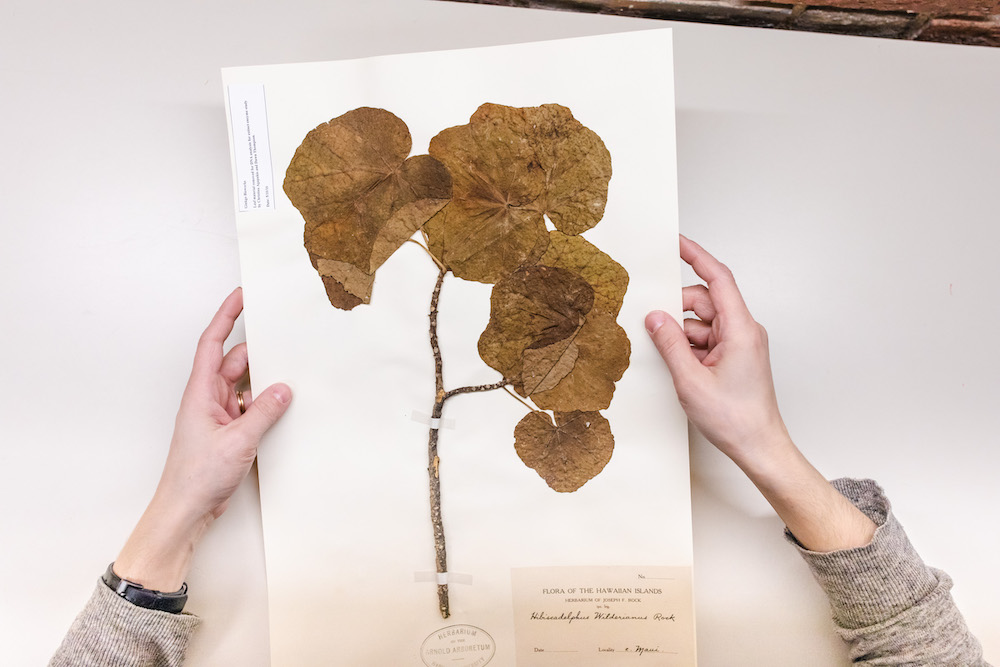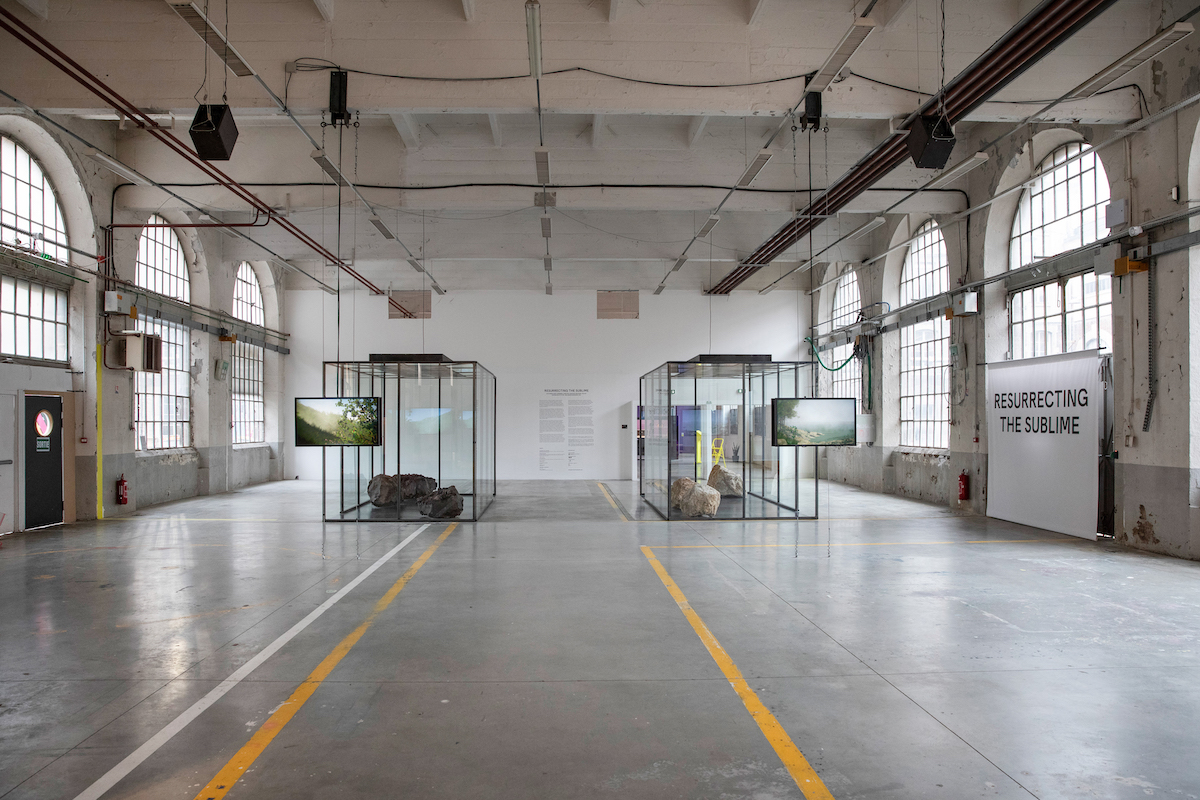Could we bring back the smell of an extinct flower? Five years ago, this question started us off on an unexpected adventure that’s led us through enormous collections of two hundred year old plant specimens and international art exhibitions, through collaborations with a paleogenomics lab, a smell researcher, and a multidisciplinary artist, and through lots of cutting edge synthetic biology. The culminating immersive installation where you can smell the lost flowers, titled Resurrecting the Sublime, in collaboration with artist Dr. Alexandra Daisy Ginsberg, smell researcher and artist Sissel Tolaas, and with the support of IFF Inc, has been shown at a number of art museums in Europe and will be having its US debut this week as part of Nature—the Cooper Hewitt Design Triennial opening May 10 in New York.
This short film tells the story of Resurrecting the Sublime, from the herbarium to the lab to the art gallery:
A lot of people at Ginkgo and beyond have been involved in bringing this project to life, from the earliest explorations about whether it would be possible with Jason Kakoyiannis all the way through the first exhibition opening. In 2016 I visited the Harvard Herbarium with my former colleague Dawn Thompson on a mission to find extinct plants. Together, we combed the stacks for preserved specimens of plants from the IUCN extinction list. From the more than 5 million samples in the herbarium, we found about a dozen extinct specimens that we could take tiny bits of leaf from. We worked with the UC Santa Cruz Paleogenomics lab to uncover sequences of DNA involved in fragrance production, which our colleague Jue Wang stitched together electronically into two thousand different versions. A team led by organism engineer Christian Ridley used those sequences to build strains of yeast harboring the extinct DNA, and test engineer Scott Marr measured the lost scents each strain made.
We focused our attention on three plants:
-
- The Hibiscadelphus wilderianus Rock, or Maui hau kuahiwi in Hawaiian, was indigenous to ancient lava fields on the southern slopes of Mount Haleakalā, on Maui, Hawaii. Its forest habitat was decimated by colonial cattle ranching, and the final tree was found dying in 1912.
- The Orbexilum stipulatum, or Falls-of-the-Ohio Scurfpea, was last seen in 1881 on Rock Island in the Ohio River, near Louisville, Kentucky, before US Dam No. 41 finally flooded its habitat in the 1920s.
- The ‘Leucadendron grandiflorum (Salisb.) R. Br.’, the Wynberg Conebush has a more complex story, which we are still uncovering. It was last seen in London in a collector’s garden in 1806; its habitat on Wynberg Hill, in the shadow of Table Mountain, Cape Town, South Africa, was already lost to colonial vineyards. This flower may prove to be completely lost: the project is bringing to light that specimens around the world may historically have been incorrectly identified.

Once we had the list of molecules that the extinct DNA sequences were making in our yeast, we worked with smell researcher Sissel Tolaas to compose those molecules into a complex smell. Sissel used her deep expertise in chemistry and smell to reconstruct the flowers’ smells in her lab, using identical or comparative smell molecules to what we measured in the foundry. Smelling Sissel’s sketches for the first time was magical and uncanny—we were smelling something impossible.
In large scale immersive installations designed by Daisy Ginsberg, fragments of Sissel’s smells diffuse through the air. As you smell the extinct flower and experience the geology of the lost landscape, you become part of an inverted natural history display—the human is the specimen on view.

For me as a biologist, art has been a really important way for me to ask questions and explore the many facets of biotechnology and its place in society. For extinctions that were caused by the actions of humans, asks us to contemplate our actions, and potentially change them for the future. I’m so thrilled to have been able to collaborate with so many brilliant scientists and artists on this project. The experience has been truly sublime. For more info, check out resurrectingthesublime.com.
EXHIBITIONS
La Fabrique du Vivant
Centre Pompidou
Paris, France
February 18, 2019 – April 15, 2019
Broken Nature: Design Takes on Human Survival
The XXII Triennale di Milano
Milan, Italy
March 1, 2019 – September 15, 2019
Resurrecting the Sublime
Biennale Internationale Design Saint-Étienne
Saint-Étienne, France
March 21, 2019 – April 22, 2019
Nature—Cooper Hewitt Design Triennial
Cooper Hewitt, Smithsonian Design Museum
New York, USA
May 10, 2019 – January 20, 2020
Nature—Cooper Hewitt Design Triennial
Cube design museum
Kerkrade, Netherlands
May 10, 2019 – January 20, 2020
AI: More Than Human
Barbican Centre
London, UK
May 16, 2019 – August 26, 2019

CREDITS
Christina Agapakis, Alexandra Daisy Ginsberg, Sissel Tolaas
GINKGO
Patrick Boyle, Alex Carlin, Natsai Audrey Chieza, Grace Chuang, Jason Kakoyiannis, Jason Kelly, Scott Marr, Krishna Patel, Kit McDonnell, Yakov Peckersky, Christian Ridley, Dayal Saran, Atsede Siba, Dawn Thompson, Jue Wang
SUPPORTED BY
IFF Inc.
WITH SPECIAL THANKS TO
Dr Michaela Schmull, Harvard University Herbaria, Cambridge
PALEOGENOMICS
Dr Joshua Kapp and Dr Beth Shapiro, Paleogenomics Lab, University of California, Santa Cruz
DNA SYNTHESIS
Twist Bioscience
ALEXANDRA DAISY GINSBERG
Dr Alexandra Daisy Ginsberg, Ana Maria Nicolaescu (3D artist), Johanna Just, Ness Lafoy, Ioana Mann, Stacie Woolsey, Nicholas Zembashi
FILM EDITING
Inferstudio
SOUND DESIGN
Sam Conran
SMELL HOOD FABRICATION
Factory Settings
SMELL DIFFUSION TECHNOLOGY
Scentcommunication
WITH THANKS FOR ADDITIONAL PLANT RESEARCH TO
Dr Nicholas Hind, Dr Gerhard Prenner, Harry Smith, The Herbarium, Royal Botanic Gardens, Kew; Dr Anthony Roberts, Changing Lives Through Nature, Cape Town; Dr Tony Rebelo, SANBI, Cape Town
